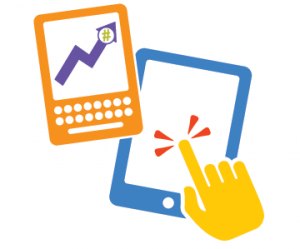Taking Action on Mobile Marketing Analytics
There is no denying that mobile marketing is one of the hottest topics in 2012. If you are a marketer in the United States, more than likely you have at least one article in your inbox describing and outlining the benefits of mobile marketing. According to eMarketer, there will be more than 106 million smartphone […]

According to eMarketer, there will be more than 106 million smartphone users in the U.S by the end of this year, and that number is projected to top 148 million by 2015.
With the growing population of mobile device users combined with the up and coming generation of super texting teens, we can all understand the need to have a solid mobile experience for our customers.
What To Do With Mobile Analytics?
In response, we have modified our websites so that they can be viewed on mobile devices, and we have optimized our emails so that they can be read on smart phones. But now what?
The answer is optimization and target marketing.
Once a new marketing medium is established and deemed worth the level of effort, we then look to how we can optimize our efforts, specific to the channel.
Television has done this for years with Nielsen ratings. Web-based marketing teams use various forms of web analytics tools. Email service providers have built in analytics tools to measure conversions. Mobile marketing tools have now advanced to the point that you can leverage these same analytics strategies and apply them to your mobile marketing program.
As mobile marketers, we have access to a second level of analytics that goes beyond the number of email messages opened and SMS messages delivered. For instance, we can now view what type of device an email message was viewed on and what type of phone an SMS message was viewed with.
Applying Mobile-Specific Data
The question then becomes what to do with this type of data. The best solution is one that leverages these types of analytics to create a smarter mobile program.
For instance, publishers have an opportunity to promote their mobile applications in a very targeted manner. This begins with leveraging a regularly scheduled email communication.
The publisher can use analytics tools to determine if the email is being read on a mobile device, what type of device (smartphone or tablet) and through which operating system. For consumers who are using smartphones and tablets, the publisher can send a message offering to download the application that is applicable to them.
Gaming companies that have mobile applications have an opportunity to communicate with their gamers in a more personal and targeted way as well. It starts by leveraging regularly scheduled SMS communications. Again, gaming companies can use analytics tools to determine if the SMS message is being read via an Android or iOS device.
When upgrades to games become available, gaming companies can send targeted messages acknowledging they know which type of smartphone or tablet is being used and offer an efficient way to upgrade the gaming application.
What about the retail space? In retail, the visual aspect of your marketing program is even more important than other industries. The way your products look and render in your mobile communications can significantly impact a customer’s decision to purchase.
Customize, And See If It Helps
Once again, begin with regularly scheduled email or SMS communications. Leverage analytics tools to determine how the customer is reading your emails and begin creating different versions of your email messaging designed and coded to meet the needs of mobile devices. Use analytics tools to determine if you are achieving a higher return on investment.
As with all new marketing media, some of us rush to be the first in line to test the waters, while others wait to read reports of how our industry is benefiting before we jump in.
We all, however, have the same hope of being able to report back to our executive management the large revenue gains we have achieved on behalf of our company. Make sure you are taking advantage of the analytics tools that are available to you. You will become a smarter marketer by creating a more targeted program for your company and your customer.
Opinions expressed in this article are those of the guest author and not necessarily MarTech. Staff authors are listed here.
Related stories